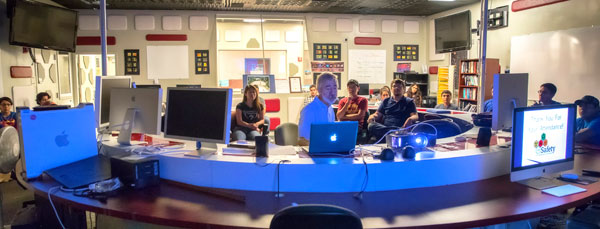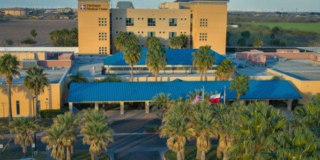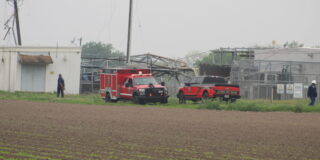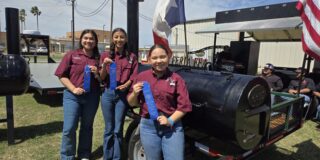- La Feria Native Soon To Retire From The Military This Summer
- Senior Eneece Avila Takes Pride in her State Title
- Dr. Noemi Infante, Harlingen Medical Center Open New Women’s Clinic
- Santa Rosa Cameron County Park Partially Reopens
- Santa Rosa Takes to Regionals Meet in Kingsville, Tx
- Long-Standing Nexstar Tower in La Feria Decommissioned
- Lionettes Powerlifting Meet
- Local Business Holds Event to Benefit RGV Shriners Club
- Knights of Columbus Holds it’s 30th Annual Golf Tournament
- KGBT Tower Dismantled
High School Astronomers Shoot for the Stars During UTRGV’s STARGATE Academy
- Updated: July 15, 2016
by Vicky Brito
BROWNSVILLE, TEXAS – A group of area high school students spent their summer getting an early launch to their college career, at the UTRGV STARGATE Academy on the Brownsville Campus.
The program started in 2005 at UTRGV legacy institution UT Brownsville, under the name Astronomy Ambassadors.
The camp, which ran June 13 through July 1, gave students interested in physics the opportunity to experience modern astrophysical research, learn basic astronomy, launch rockets and learn computer programming.
Additionally, students participated in research and met with UTRGV physics professors.
STARGATE – Spacecraft Tracking and Astronomical Research into Giga-hertz Astrophysical Transient Emission – is a collaboration between SpaceX and CARA (the Center for Advanced Radio Astronomy) at UTRGV.
STARGATE Academy Program Director Andy Miller said the students who participate are achievement oriented, focused, and seek summer enrichment, and he tries to make sure the theories and formulas of physics are simplified so the topic is less daunting for youngsters.
“Once you learn the language, it’s doable,” he said.
This is the first year the students taking the camp can receive Dual Enrollment credit through the UT System, by taking the three-hour Astronomy 1401 course and an accompanying one-hour lab credit.
Miller said exposing students to the types of research that might be done by a physicist or an astronomer can help them decide if physics is for them.
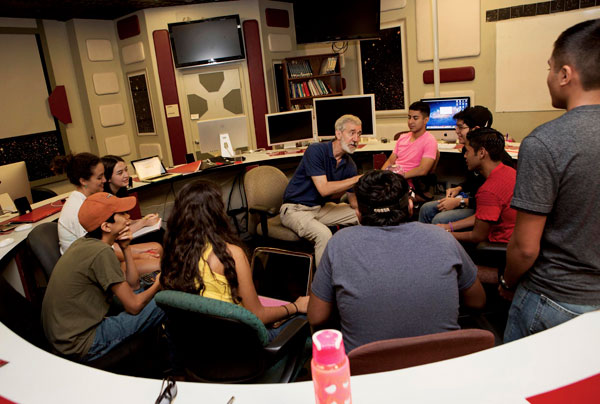
High school students from across the Rio Grande Valley attended UTRGV’s STARGATE Academy this summer, sponsored by the Center for Advanced Radio Astronomy (CARA). The academy lets high school students experience modern astrophysical research, learn basic astronomy, launch rockets and try their hand at computer programming. They also can earn UT System dual credit. Here, Andy Miller, academy program director and lead instructor for STARGATE, talks about the process of launching a vehicle into space. Photo: David Pike/UTRGV
“If they do like it, then we can help guide them,” Miller said. “When we talk about physics, a lot of people don’t understand what physics is, and they don’t have a sense for what physicists do.”
Physics and engineering are, in many ways, closely related, he said.
“Physics is more advancing knowledge by looking for what’s new and different and making discoveries, whereas engineering is more about taking something that is known and improving it, making it more efficient and applicable, essentially fixing a problem.”
Yhamio Garcia-Montiel is finishing his last month of high school in Mexico, and acting on his interest in astronomy, he decided to attend the STARGATE camp to learn more about physics.
He found the camp fascinating, and already buoyed by his existing interest in the stars.
“What I enjoyed most pertained to the stars and their luminosity,” he said. “I didn’t know how they measured the distance of luminosity, and when I finally learned, it was interesting.”
Jimena Padilla is a 17-year-old senior from St. Joseph Academy in Brownsville, where Miller was her high school physics teacher, which sparked her interest in the program.
The ability to learn about the university’s involvement in the recent discovery of gravitational waves through a multiform collaboration with
LIGO and other organizations appealed to Padilla.
“I thought it was interesting how the university’s involvement was intrinsic to discovering gravitational waves, which is at the edge of science right now. And we’ve been talking a lot about how that applies to astronomy,” Padilla said.
At the STARGATE camp, students are able to study data from the Arecibo Remote Command Center.
“Arecibo is the world’s biggest radio telescope,” Miller said. “From here, we have data from that telescope and the students are able to go through that data. We’re looking at lot at computer programming and data, and we’re going through images that were taken by astronauts at the space stations. We try to give the students a taste of that research and what is involved.”

